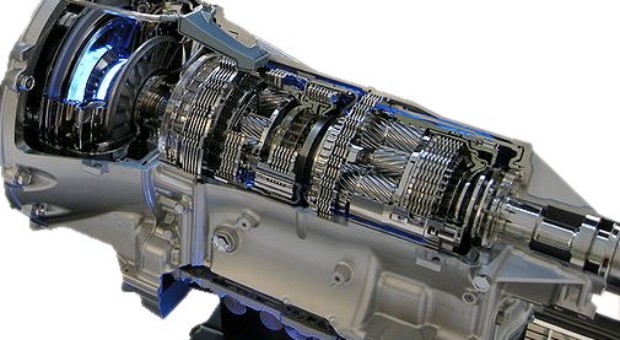
One of the most expensive and unavoidable repairs a vehicle owner can face is the loss of a transmission. There are many repairs that can be delayed for a few days, weeks, or even months. A defective transmission is not one of them. The transmission is the link between the engine and the tires providing the vehicle with a mechanism to regulate speed and apply power at controlled rates. When that device is inoperable the car will not go anywhere. There are a few indicators that an acute operator can detect for notice that a mechanic is needed.
Automatic Transmissions
Most automobiles sold on the market today are automatic transmissions and operate off of a pressurized hydraulic system that forces changes in power and speed. The process and mechanical principles at play happen in a vacuum because drivers only know that they push on the gas and the cars go. One of the most obvious indicators of the need for a repair technician is when the gas pedal is pushed with the engine running, the brakes released, the transmission in gear and the car fails to move. There are very few options available to an operator to fix a transmission problem and most often the vehicle will have to be taken to a transmission repair specialist or the original equipment manufacturer. The technology behind the designs of each transmission are very complex, and most mechanics do not get inside of a transmission often enough to have a familiarity with their operations to repair them. If your automatic transmission fails to put the vehicle in motion when you put it in drive, check the fluid level. If the level is fine and the vehicle does not move, it is time to see a mechanic for troubleshooting.
Modern technology advances in transmission systems have incorporated electronic sensors that can detect a myriad of problems, but not all of them. Some parts stores and most service centers have the diagnostic machines needed to retrieve the data from the computers and identify the monitored equipment’s failures. When the automatic transmission is low on fluid it cannot build enough pressure to engage the driveline with enough force to get the wheels going. If you see any oil under your car and the transmission fluid is low take preventative measures. Fill the transmission with the correct fluid and take the vehicle to the shop. If the fluid runs too low on the interstate or any other road, the risk of causing a traffic disruption increases and accidents increase.
Standard Transmissions
While standard transmissions are rare these days, they are not obsolete. The term “standard” should not be used either as the automatic transmission is the most commonly standard issued transmission in a new car. Oil is just as important in a manual shift transmission as it is in an automatic, and it must be checked when the vehicle oil is serviced, or at least every other oil change.
Manual shift transmissions come in two types these days. In some automatic transmissions, there is a toggle switch that allows the operator to shift the transmission manually through computer operation. The type of manual transmission we will be evaluating is the one accompanied by a clutch. Drivers operate their vehicles in very different ways, and the car will be maintained accordingly. Some drivers are superb at navigating the change of gears through upshifting and downshifting while others are not. If you smell a funny smell every time you take off you are probably in need of some instruction for proper driving techniques. Eventually, the clutch will begin to give out, and the vehicle will no longer allow you to shift the transmission into gear. To inspect the condition of your clutch push the pedal all of the way to the floor and put the vehicle in gear. Let up on the pedal and take notice of the location of the pedal when the vehicle begins to move forward. If you notice the vehicle begins to move higher and higher up on the pedal your clutch may be in trouble. Other indicators of a problem are grinding noises when you attempt to put the gear shift in a particular gear position or if the car jumps out of gear while driving. If the vehicle has a difficult time going up hills and pulling any weight the clutch may be in need of immediate attention.
Generally, transmissions are very good at telling you there are problems. There are the rare occasions where a shaft will snap due to a torque distribution issue and there are no indicators. For the most part, automatic transmissions will outlast the vehicle, and it never becomes a factor. If you do notice a loss of power and the motor seems fine, see a mechanic. When you observe an oil leak of any kind in the transmission area, see the mechanic. When a transmission has an internal problem and starts giving you symptoms of a problem, take it to a qualified mechanic as soon as possible. If the problem is left unrepaired and continues to break down the metal debris will travel throughout the entire transmission assembly and create a situation where the costs are unmanageable. Being proactive will save you a fortune, and having a trusted mechanic is priceless.
The writer, Ray Donato, is an auto repair enthusiast who has made a number of modifications and repairs to his vehicle, but of course he can’t handle everything – especially when it comes to the transmission.




















